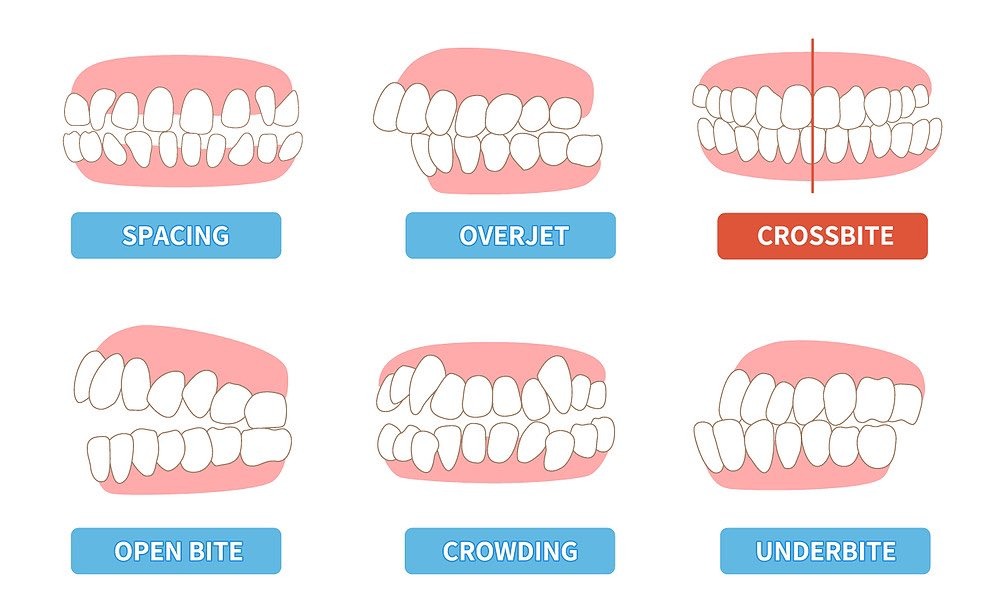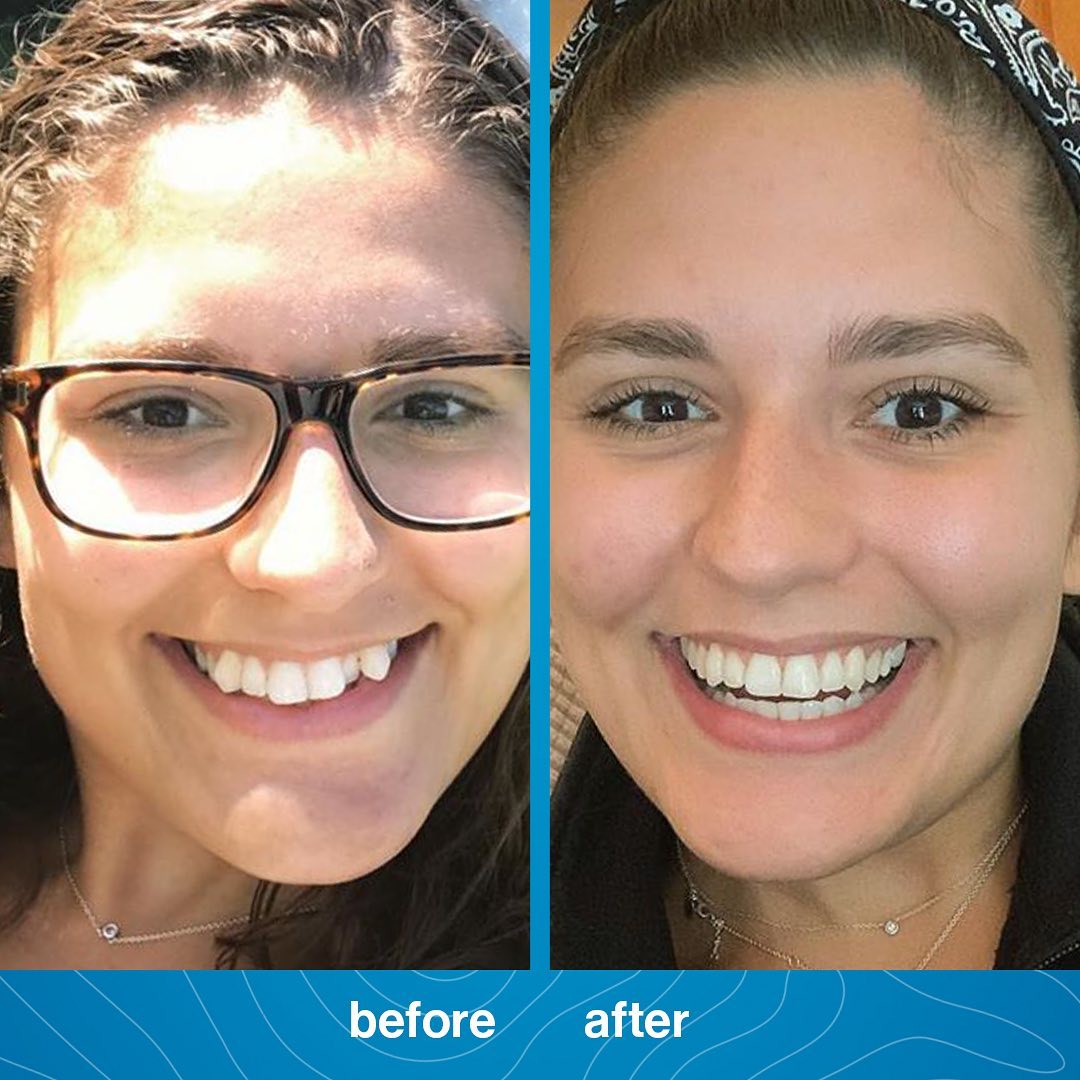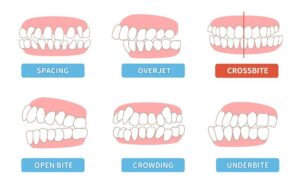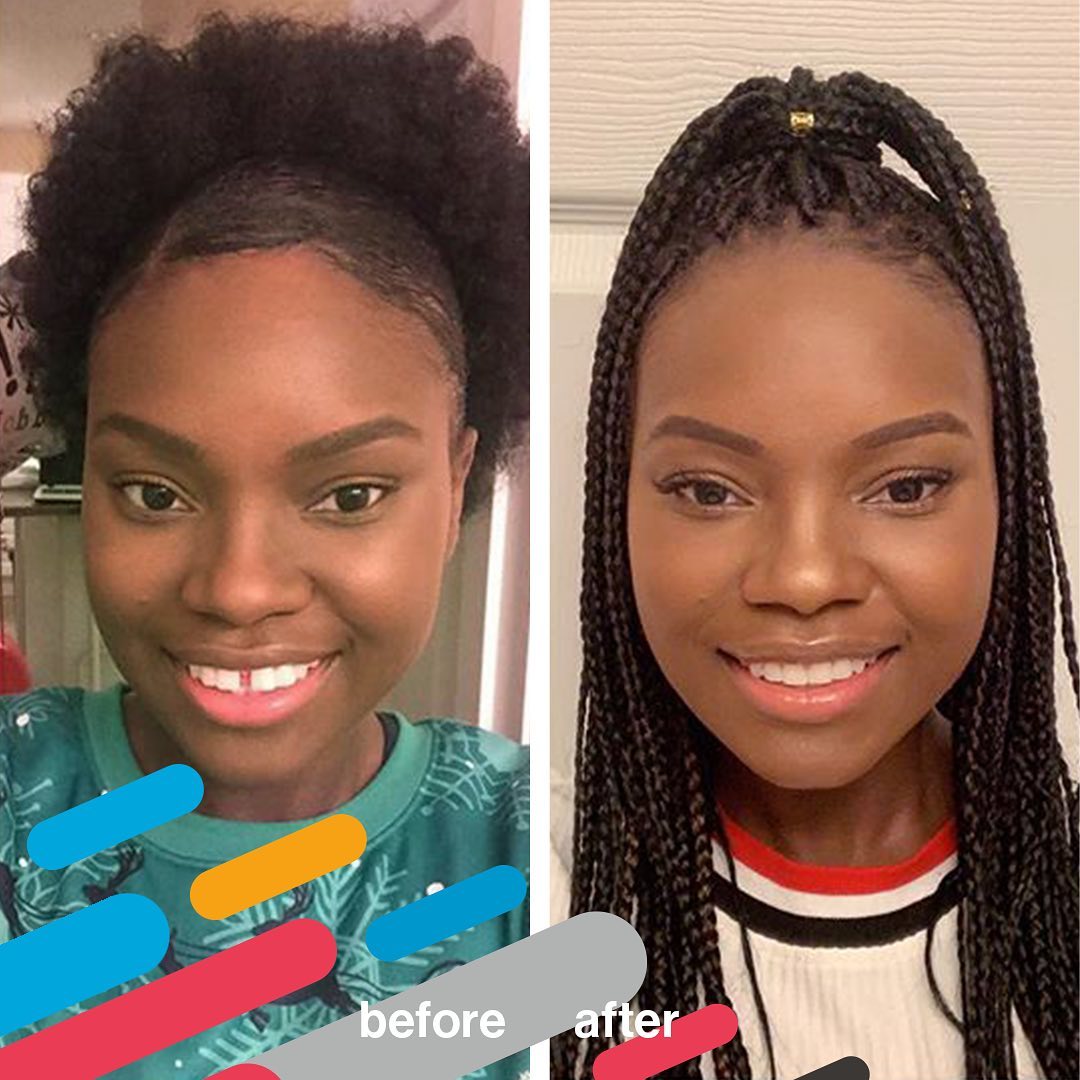
WHAT IS MALOCCLUSION?
Please contact Dr. Jacquie Smiles today to learn more about orthodontic treatments for your misaligned teeth with Invisalign clear braces and invisible aligners by calling (845) 782-4288 or filling out the contact us to receive additional information.

10 DIFFERENT TYPES OF MALOCCLUSION
Here are some of the common malocclusion below. There are 10 different types of misaligned teeth, from crooked teeth, and overbites to underbites.
1. CROSSBITE
A crossbite is where your upper teeth bite inside your lower teeth. It can affect your front or back teeth.
2. DIASTEMA
A diastema is a space between two teeth, usually the front teeth.
3. IMPACTED TOOTH
An impacted tooth is one that’s unable to erupt through the gum normally. It is blocked from breaking through the gum.
4. MISSING TOOTH
Missing teeth, or hypodontia, may occur as a result of teeth not developing properly or through some kind of trauma.
5. OVERCROWDING
Overcrowding is caused by a lack of space, resulting in teeth that are crooked and overlap. It’s the most common reason for orthodontic treatment among adults.
6. OVERJET
An overjet is where your top teeth extend past your bottom teeth horizontally (not to be confused with an overbite).
7. OVERBITE
An overbite can cause your front teeth to bite down on your gums.
8. OPEN BITE
An open bite is where the front teeth don’t overlap the lower teeth. An open bite affecting the front teeth is known as an anterior open bite.
9. SPACING
Spacing can occur between two or more teeth. Some of the causes can include missing teeth, small teeth, tongue thrusting, and thumb sucking.
10. UNDERBITE
A crossbite that affects the front teeth is known as an anterior crossbite, or perhaps more commonly as an underbite.
Causes
Malocclusion is often linked to genetic factors, premature loss of baby teeth, disproportionate jaw or teeth sizes, prolonged use of a pacifier, thumb sucking in early childhood and injuries that result in the misalignment of the jaw. Other cause include tumors in the mouth or jaw, certain dental problems such as improper fit of dental fillings, braces, or retainers, and certain habits such as tongue thrusting.
Symptoms
Symptoms of malocclusion may include difficulty or discomfort during chewing or biting, speech problems, including the development of a lisp, breathing through the mouth rather than the nose, and frequent biting of the inner cheeks or tongue.
Diagnosis
Misaligned teeth is usually diagnosed through routine dental exams. The dentist can often detect problems with the alignment of your teeth and jaws by looking at your teeth and asking you to bite down several times. In some cases, X-rays, plaster models of the teeth, and special computer imaging can be used to get a more detailed look at the teeth and jaws.
Treatment
Treatment for malocclusion can involve a variety of strategies, including the removal of teeth to correct overcrowding, braces to correct the position of the teeth, repair of irregular or misshapen teeth, surgery to reshape or shorten the jaw, wires or plates to stabilize the jaw bone, and in less severe cases, no treatment might be necessary.
Impact on Oral Health
Malocclusion can lead to oral health problems if not addressed early. Impact on oral health may include increased risk of tooth decay and gum disease, due to difficulty in cleaning overcrowded or misaligned teeth. It may also cause discomfort or difficulty when chewing, speaking, or cleaning the teeth. It can sometimes cause pain and discomfort in the jaw muscles and might affect the shape of a person’s face.
Prevention
While not all causes of malocclusion can be prevented (such as those due to genetics or uncontrollable factors), some preventative measures can be taken. These include avoiding thumb sucking and pacifier use beyond the age of 3, maintaining good oral hygiene, and receiving regular dental check-ups.
SCHEDULE A MALOCCLUSION CONSULTATION TO TREAT YOUR MISALIGNED TEETH
Please contact Dr. Jacquie Smiles today to learn more about orthodontic treatments for your misaligned teeth with Invisalign clear braces and invisible aligners by calling (845) 782-4288 or filling out the contact us to receive additional information. Our office is conveniently located near 70 Gilbert Street, Suite 202, Monroe, NY 10950.





